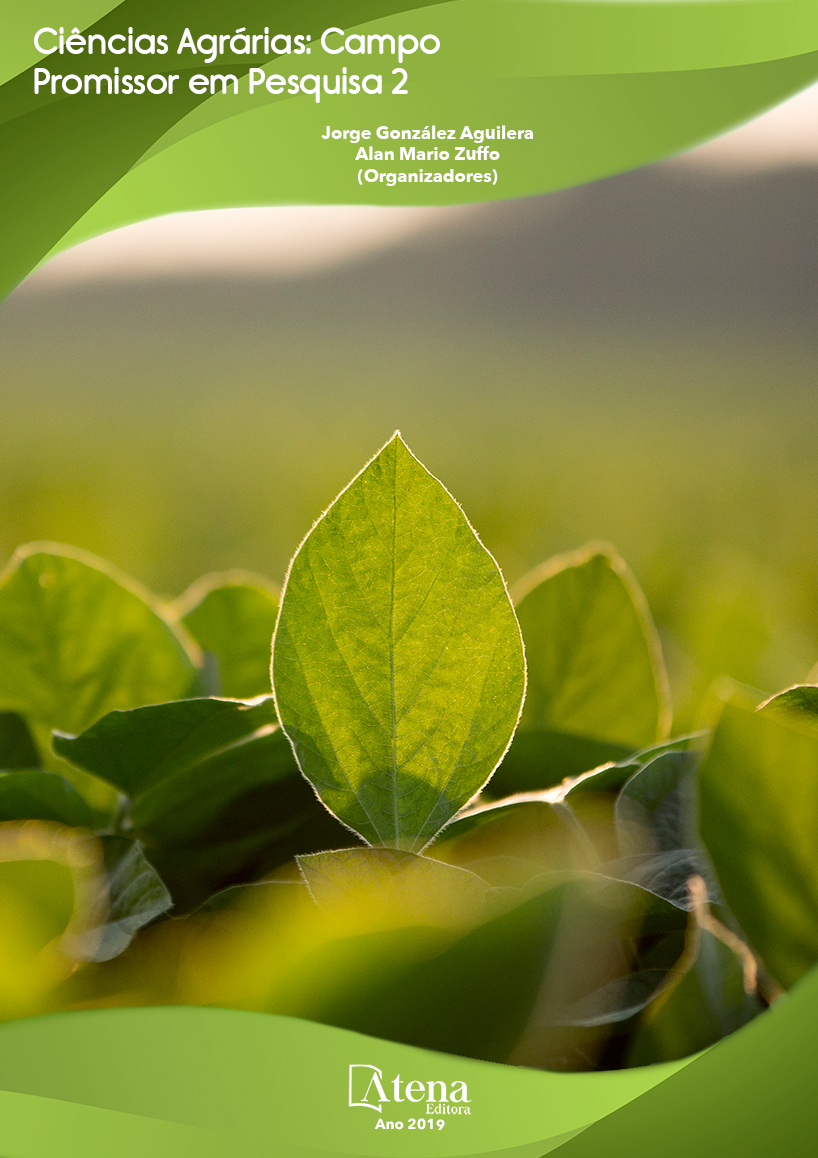
Desenvolvimento Vegetativo da Vinagreira (Hibiscus Sabdariffa L.) em Função de diferentes níveis de pH
As hortaliças folhosas não
convencionais são consideradas exigentes em
nutrientes, e um dos grandes responsáveis
pela falta de nutriente no solo, é o nível de
pH. Diante do exposto, objetivou-se avaliar o
desenvolvimento vegetativo da vinagreira em
função de diferentes níveis de pH. O experimento
realizou-se no IFMA- Campus Codó, em (DBC),
com cinco tratamentos e cinco repetições, os
níveis de pH utilizados foram T1- pH: 3,3, T2-
pH: 4,7, T3- pH: 5,6, T4- pH: 6,3 e T5- pH:
7,8. Para a obtenção das quantidades dos
diferentes níveis de pH, utilizou- se crescentes
doses de calcário misturadas a determinadas
quantidades de solo incubado. A unidade
experimental era constituída de um vaso de
plástico com capacidade para 30L. O calcário
utilizado foi calcítico, com PRN de 104,5%.
Após a aplicação do calcário, o pH do solo foi
monitorado a cada 2 dias, até a estabilização
dos valores, que ocorreu aos 60 dias. A seguir
foram determinadas as variáveis: diâmetro
do caule (DC), matéria fresca da parte aérea
(MFPA); matéria seca da parte aérea (MSPA);
altura da planta (AP), quantidade de folhas
(QF), matéria seca da raiz (MSR), quociente
de robustez (QR), matéria seca total (MST) e
peso total da planta (PTP). Os dados obtidos
foram submetidos a análises de variância
(teste F) e ao teste de médias de Tukey, a
5% de probabilidade, utilizando-se programa
ASSISTAT (7.1). O T3 foi o tratamento que mais
se sobressaiu entre os demais, Os tratamentos
T1 e T5 foram os que demonstraram as menores
médias.
Desenvolvimento Vegetativo da Vinagreira (Hibiscus Sabdariffa L.) em Função de diferentes níveis de pH
-
DOI: 10.22533/at.ed.16019200613
-
Palavras-chave: Potencial hidrogênio, Produtividade, Hortaliça.
-
Keywords: Hydrogen potential, Productivity, Vegetables
-
Abstract:
Unconventional hardwood
vegetables are considered to be nutrient
demanding, and one of the main reasons for the
lack of nutrients in the soil is the pH level. In view
of the above, the aim was to evaluate the vegetative development of the vinegar as a
function of different pH levels. The experiment was performed at IFMA-Campus Codó,
in (DBC), with five treatments and five repetitions. The pH levels used were T1- pH: 3.3,
T2- pH: 4.7, T3- pH: 5.6, T4- pH: 6.3 and T5- pH: 7.8. In order to obtain the quantities
of the different pH levels, increasing doses of limestone mixed with certain quantities
of incubated soil were used. The experimental unit consisted of a plastic vessel with
a capacity of 30L. The limestone used was calcareous, with NRP of 104.5%. After
application of the limestone, the pH of the soil was monitored every 2 days, until the
stabilization of the values, which occurred at 60 days. The following variables were
determined: stem diameter (CD), fresh airborne mass (MFPA), dry airborne mass
(MSPA), plant height (AP), quantity of leaves (QF), root dry matter (MSR), robustness
ratio (QR), total dry matter (MST) and total plant weight (PTP). The data obtained were
submitted to analysis of variance (F test) and Tukey's mean test, at 5% probability,
using ASSISTAT software (7.1). T3 was the treatment that stood out the most among
the others. T1 and T5 treatments were the ones that showed the lowest averages.
-
Número de páginas: 15
- Ayrna Katrinne Silva do Nascimento
- Marcelo Eduardo Pires
- Álvaro Itaúna Schalcher Pereira
- Davi Belchior Chaves


